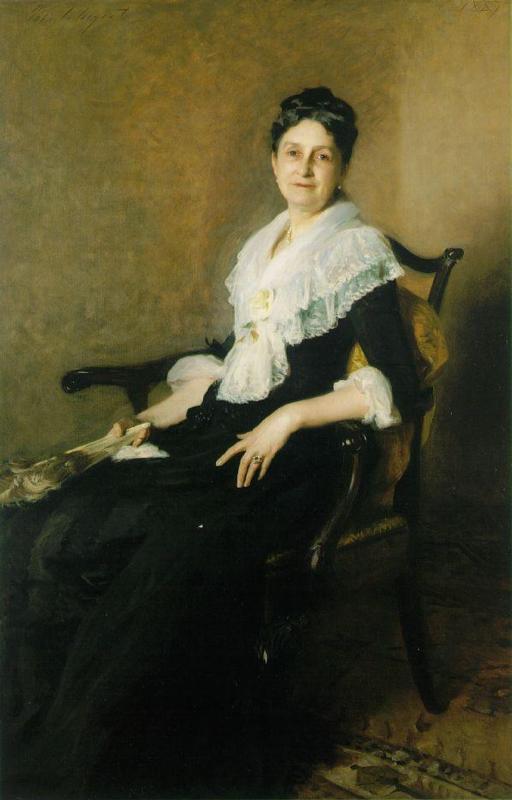|
Elizabeth
Allen Marquand
(Mrs.
G.
Marquand)
John
Singer
Sargent
-- American painter
1887
The
Art
Museum, Princeton
University
Princeton,
New Jersey
Oil
on
canvas
168.9
x
106.7 cm
(66 1/2 x 42 in )
Jpg: Net
(unknown)
Henry G. Marquand
was a
banker who
made his money financing railroads for the Vanderbilts and others. Both
his wife and he were active in the arts, avid collectors and possessed
some of the finest Van Dycks in the United States, an incredible array
of Roman bronzes, and a superb collection of Chinese porcelains.
In 1884, the
Marquands
had commissioned Richard
Morris
Hunt
to design their home at the northwest corner of Madison Avenue and 68th
Street in New York. The mansion was a French Renaissance creation
derivative of the châteaus of the sixteenth century. Huge, the
house
evoked his wealth and status. To fill this home, they actively
collected
art and commissioned some of the best of American artists. A Sargent
portrait
would be an obvious trophy.
This portrait is
the
first American
commission for Sargent within the States. It was a commission he really
didn't want, and he wasn't all that excited about traveling to the
America
to do it -- but he did, and as a result the trip would completely
change his career and bring him the success that had been cut short in
Paris and had been eluding
him in London. America, he found, was starving
for artists that had a European flare, and Sargent certainly fit that
mold.
 The
Marquands as a family were interesting people. It seems they had their
hands in just about everything at the time. Henry G. Marquand became
the
second president of the Metropolitan
Museum of Art and was painted by Sargent in 1897. He served as one
of 400 on the Executive Committee to raise $125,000 for the cost of the
pedestal of the Statue
of Liberty. Their son, Allan Marquand (1853-1924) became a
professor
of Art and Archaeology and he, along with Charles Eliot Norton of
Harvard,
were to first to introduce the serious study of art into the curriculum
of the American colleges. The
Marquands as a family were interesting people. It seems they had their
hands in just about everything at the time. Henry G. Marquand became
the
second president of the Metropolitan
Museum of Art and was painted by Sargent in 1897. He served as one
of 400 on the Executive Committee to raise $125,000 for the cost of the
pedestal of the Statue
of Liberty. Their son, Allan Marquand (1853-1924) became a
professor
of Art and Archaeology and he, along with Charles Eliot Norton of
Harvard,
were to first to introduce the serious study of art into the curriculum
of the American colleges.
Notes:
|




